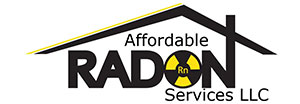 Your home should be a safe haven for you and your family. But sometimes, substances can lurk in your home, ultimately harming those who live there. Radon is one of these substances. This odorless, colorless gas has been found to cause lung cancer but can damage lung cells in general. According to the EPA, about one in 15 U.S. households have radon levels that are at or above the EPA action level. By following this checklist, you can detect and reduce radon in your home.
Your home should be a safe haven for you and your family. But sometimes, substances can lurk in your home, ultimately harming those who live there. Radon is one of these substances. This odorless, colorless gas has been found to cause lung cancer but can damage lung cells in general. According to the EPA, about one in 15 U.S. households have radon levels that are at or above the EPA action level. By following this checklist, you can detect and reduce radon in your home.
- Know your home’s risk.
Certain types of homes will have different radon risks. Your approach to reducing radon may be different if you have a crawlspace rather than a basement. Also, remember that soil conditions can vary greatly even in the same neighborhood, so consider this once you start radon testing. - Increase ventilation.
A simple way to reduce radon levels is to increase your home’s ventilation. This could involve inspecting and improving your home’s ventilation systems. You can also open more windows and doors to increase natural ventilation. - Seal cracks.
Radon comes up from soil and groundwater, so make sure that your home’s foundation is sealed tightly. This is the most basic step you can take to prevent radon seeping up into your house. If you are unable to do this on your own, consider hiring a contractor. - Hire a radon testing company.
Once you assess your risk and take basic steps to control radon in your home, it’s best to hire residential radon testing services. These professionals will come into your home and perform a full assessment of radon levels. If your levels are too high, they will give you recommendations to lower them. - Remember to test your home’s water too.
While testing your home’s soil and air is important, you can’t forget to also test the water. Water containing radon can be dangerous because it comes off the water when you run the shower and sink. The radon testing company will inspect your water and inform you of any contamination. This is especially important if you drink water from a well.
By taking the initiative to control your home’s radon levels, you can prevent contamination and adverse health effects. While working with a professional testing company, be sure to ask questions about prevention best practices. Then you can adjust your home care methods accordingly.

Recent Comments